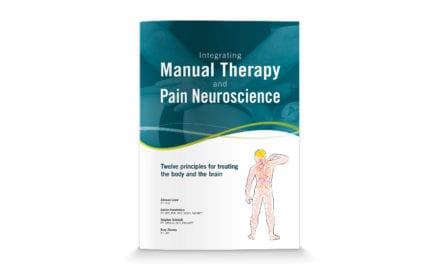 |
On December 11, 2009, the Medicare Payment Advisory Commission (MedPAC) released its preliminary draft recommendation to the Secretary of Health and Human Services (HHS) regarding its projected payment rates for fiscal year 2011. Under these draft recommendations, inpatient rehabilitation facilities, long-term care hospitals, skilled nursing facilities, and home health providers would receive no Medicare payment update in 2011.
Other draft recommendations from the Commission include a 1% payment update for physicians and a 1.2% update for hospice care. Hospitals would see a full market-basket update. Notably, MedPAC focused on Medicare margins in the postacute sector in much of its analysis of payment updates.
However, it is this author’s opinion that MedPAC should examine the entire long-term care financing system when making recommendations to Congress. The stability of this system is crucial to the provision of high-quality care, especially given current state budget conditions and the importance of adequate Medicare funding in a final health care reform bill.
In response to these proposed recommendations, Alan R. Rosenbloom, president of the Alliance for Quality Nursing Home Care, stated, “MedPAC’s singular focus on Medicare margins in the long-term care sector does a disservice to frail, elderly, and vulnerable individuals who receive care and services in long-term and post-acute care facilities and will ultimately result in lost jobs.”
MedPAC began the discussion on the update framework for LTACH by first considering access to care. While MedPAC stated there were no exact indicators to measure beneficiaries’ access to LTACH services, the methodology used is to examine the number of facilities, number of beds available, and number of services provided by the LTACH industry. Across the board, a common pattern was that the number of LTACHs participating in Medicare has leveled off in recent years, which followed a quadrupling in the number of LTACHs between 1991 and 2005. There is also a leveling off in the number of Medicare-certified beds.
MedPAC also found that profit margins on LTACH Medicare cases averaged 3.4% during FY 2008 and projected that Medicare margins will increase, on average, to 5.8% in FY 2010 with expected improvements in documentation and coding and recent changes to an updated classification system (ie, MS-LTC-DRGs).
MedPAC also evaluated the Medicare profit margin spread of LTACHs. The aggregate margin in 2008 for all LTACHs was 3.4%. In FY 2008, there was a wide spread in profitability, with the bottom quarter of LTACHs having margins of negative 8.2% or less, and the top quarter having margins of 11.8% or more. Margins for for-profit LTACHs were significantly higher than those of not-for-profit LTACHs. MedPAC found that lower per-discharge costs, rather than higher payments, drove the differences in financial performance between LTACHs with the lowest and highest margins. High margin LTACHs also had a shorter average length of stay and far fewer high cost outlier cases and payments.
Notably, MedPAC also commented on the 25% threshold rule. In its report, MedPAC discussed the history of the 25% threshold rule and whether there was any way to better distinguish hospitals-within-hospitals from freestanding LTACHs and determine whether any distinction is meaningful. MedPAC reported that their preliminary work on this issue suggests that a distinction may not be meaningful because some freestanding LTACHs appear to admit large shares of their patients from one acute care hospital and some hospital-within-hospitals admit patients from a wide network of acute care hospitals.
MedPAC also reported concern about the lack of reliable quality measures for LTACHs, and expressed interest in exploring the development of such measures. Unlike most other health care facilities, LTACHs do not submit quality data to CMS. Therefore, MedPAC plans to convene an expert panel to help identify meaningful measures and the data needed for measurement. It also plans to work with a contractor to assess the feasibility of risk-adjusted quality measurements, and expressed interest in working with LTACH chains and industry groups that collect and analyze proprietary quality data for purposes of improving both patient care and Medicare payment policy.
Finally, MedPAC also discussed the status of facility criteria for admission to LTACHs. MedPAC indicated that the Secretary of Health and Human Services was required to release a report on criteria development in June 2008 and that MedPAC’s understanding is that the report is in the final stages of clearance. MedPAC did not have an exact estimate of when this report would be issued. When asked whether a screening procedure for LTACH admission would be effective, MedPAC reported that they do not yet know whether such a procedure would be effective and emphasized that this issue should gain some clarity within the next year as the 2009 claims data is released.
INPATIENT REHABILITATION FACILITY RECOMMENDATIONS
During the December 11 meeting, MedPAC leadership began discussion on IRFs by examining the supply of facilities across the nation. MedPAC reported that the number of IRFs increased modestly in the early years of the IRF PPS, peaking in 2005. The number of IRFs then decreased modestly from 2005 to 2007. By 2008, the number of IRFs was stable, remaining unchanged from the 2007 level.
Additionally, occupancy rates have been on a downward trend for much of the last decade, with the decline accelerating in 2004 with the renewed enforcement of the compliance threshold. In 2008, the IRF occupancy rates increased slightly, but occupancy still remains well below levels earlier in the decade. MedPAC believes these factors suggest that facility capacity is adequate to meet demand.
MedPAC also reported that while the volume of fee-for-service patients in IRFs has declined over recent years, the increase in payments per case has been substantial, which generally reflects the impact of the renewed enforcement of the compliance threshold. The compliance threshold has resulted in IRFs changing their admission patterns and treating fewer patients with hip and knee replacements that do not count toward the compliance threshold and have a lower case mix and payment rate.
Notably, MedPAC commented that the drop in the number of IRF cases has raised the question of whether the compliance threshold is creating an access problem. To answer this question, MedPAC evaluated the 10 acute care hospital discharges that resulted in the highest admissions to IRFs and tracked these cases to evaluate how the patterns of discharge from hospitals to various post-acute care have changed over time. The study shows that the share of hip and knee replacement patients discharged from the hospital to IRFs has decreased, but the share discharged to home health care and SNFs has increased. In other words, patients who previously received care in IRFs for this diagnosis are receiving it in other post-acute care settings.
MedPAC also evaluated the IRF capital needs, costs, and margin trends. The aggregate margin in 2008 was 9.5%, which was 2.5% lower than in 2007. MedPAC projects the 2010 margin to be 5%. Since facility supply has stabilized in 2008, access to care appears adequate and the projected 2010 margin is 5%, the draft recommendation from MedPAC is to eliminate the update to payment rates for IRFs for fiscal year 2011.
CONCLUSION
At the time of submission of this article for publication, the final vote on these issues by MedPAC had not yet occurred. With MedPAC’s strong focus on the 2008 IRF and LTACH margins in preparing the draft recommendations for FY 2011, it is clearer than ever that CMS is trying to reduce spending across the board. In these times of economic hardship and health care reform, health care providers should continue to manage operations in as cost-efficient a manner as possible while maintaining the highest possible quality of care. It appears that fiscal conservatism regarding health care spending will continue to be a significant trend of the next decade.
Cherilyn G. Murer, JD, CRA, is CEO and founder of the Murer Group, a legal-based health care management consulting firm in Joliet, Ill, specializing in strategic analysis and business development. Murer is also a member of the editorial advisory board of Rehab Management. She can be reached at (815) 727-3355, or at www.murer.com.





